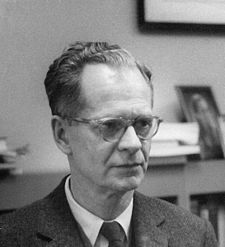 As of 2006, the United States accepts more legal immigrants as permanent residents than all other countries in the world combined. Since the liberalization of immigration policy in 1965, the number of first- generation immigrants living in the United States has quadrupled, from 9.6 million in 1970 to about 38 million in 2007. 1,046,539 persons were naturalized as U.S. citizens in 2008. The leading emigrating countries to the United States were Mexico, India, and the Philippines.
As of 2006, the United States accepts more legal immigrants as permanent residents than all other countries in the world combined. Since the liberalization of immigration policy in 1965, the number of first- generation immigrants living in the United States has quadrupled, from 9.6 million in 1970 to about 38 million in 2007. 1,046,539 persons were naturalized as U.S. citizens in 2008. The leading emigrating countries to the United States were Mexico, India, and the Philippines. Recent debates on immigration have called for increasing enforcement of existing laws with regard to illegal immigrants, building a barrier along some or all of the 2,000-mile (3,200 km) U.S.-Mexico border, or creating a new guest worker program. Through much of 2006, the country and
Congress was immersed in a debate about these proposals. As of April 2010, few of these proposals had become law, though a partial border fence was approved and subsequently canceled.
(2) Contemporary Immigration
(1) Until the 1930s, the gender imbalance among legal immigrants was quite sharp, with most legal immigrants being male. As of the 1990s, however, women accounted for just over half of all legal immigrants, shifting away from the male-dominated immigration of the past.
(2) Contemporary immigrants tend to be younger than the native population of the United States, with people between the ages 15 and 34 substantially overrepresented.
(3) Immigrants are also more likely to be married and less likely to be divorced than native-born Americans of the same age.
(3) The Impact of 9/11 on the US Immigrants
80% of immigrants say the government has become tougher on enforcing immigration laws since 9/11, and 30% report that they personally have experienced discrimination.
Public attitudes about immigration in the U.S. have been heavily influenced by the aftermath of the September 11, 2001 attacks. After the attacks, 52% of Americans believed that immigration was a good thing overall for the U.S., down from 62% the year before, according to a Gallup poll. Half of Americans say tighter controls on immigration would do "a great deal" to enhance U.S. national security, according to a Public Agenda survey.
(4) Top Ten Foreign Countries - Foreign Born Population Among U.S. Immigrants
| Country | 2000 | 2004 | 2010 | 2010 | %(2010) |
|---|---|---|---|---|---|
| Mexico | 175,900 | 7,841,000 | 8,544,600 | 9,600,000 | 23.7% |
| China | 50,900 | 1,391,000 | 1,594,600 | 1,900,000 | 4.7% |
| Philippines | 47,800 | 1,222,000 | 1,413,200 | 1,700,000 | 4.2% |
| India | 59,300 | 1,007,000 | 1,244,200 | 1,610,000 | 4.0% |
| Vietnam | 33,700 | 863,000 | 997,800 | 1,200,000 | 3.0% |
| Cuba | 14,800 | 952,000 | 1,011,200 | 1,100,000 | 2.7% |
| El Salvador | 33,500 | 765,000 | 899,000 | 1,100,000 | 2.7% |
| Dominican Republic | 24,900 | 692,000 | 791,600 | 941,000 | 2.3% |
| Canada | 24,200 | 678,000 | 774,800 | 920,000 | 2.3% |
| Korea | 17,900 | 701,000 | 772,600 | 880,000 | 2.2% |
| Total Pop. Top 10 | 498,900 | 16,112,000 | 18,747,600 | 21,741,000 | 53.7% |
| Total Foreign Born | 940,000 | 31,100,000 | 34,860,000 | 40,500,000 | 100% |
* This Vidio Clip Source is http://www.youtube.com/watch?v=8SGSJx-JCmQ
This is used here for an educational purpose.
* The infomation about 'Immigration to the U.S.A' was extrated from 'Wikipedia'.
That was also used here for the educational purpose.
* The Pictures above was copied from 'immigrationdnatesting.us' & 'libertarianviewpoint.com'.
They were used here for the educational purpose as well.






